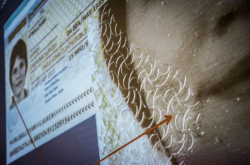LYON, France – Global experts in currency counterfeiting and security have gathered at the INTERPOL General Secretariat this week to discuss the latest techniques for identifying fake banknotes.
The latest trends in counterfeiting and the evolution of banknote security features are at the top of the agenda during the INTERPOL Conference on Counterfeit Currency.

The three-day (4 – 6 September) meeting brings together 120 experts from law enforcement, monetary issuing authorities, international organizations and private industry from 47 countries to consider ways to better secure banknotes from counterfeiting and to investigate counterfeiting cases.
In addition to the challenges currency counterfeiting poses to police, the conference will also examine the growing role of the Darknet, technical aspects of investigating counterfeiting, and the latest developments in security features and authentication tools.
Particular issues raised include the rise of ink-jet printed counterfeit notes and resulting investigative challenges; development of national and international counterfeit currency monitoring systems; and the need for legal and operational frameworks to prevent the distribution of industrially produced counterfeit components used for banknotes.
“Preventing organized criminal networks from sourcing the materials for the production of highly deceptive counterfeit banknotes and other security documents is a challenge for law enforcement,” said INTERPOL’s Director of Organized and Emerging Crime, Paul Stanfield.

“The main concern is that unscrupulous manufacturing companies which produce security features such as holograms and watermarked security paper suitable for counterfeiting could be co-opted into providing them to criminals,” added Mr Stanfield.
In this respect, participants will be briefed on INTERPOL’s Project S-Print. This initiative brings together law enforcement and the security printing industry to prevent organized criminal networks from gaining access to equipment which could be misused to produce counterfeit currency and security documents.

To further enhance global efforts in identifying counterfeit currency and security documents, INTERPOL has designed an online e-learning module on security document identification which is available to police in all member countries through the Organization’s secure global police communications network.
Contributions from the private sector, both financial and in the form of expertise, have supported various activities of INTERPOL’s Counterfeit Currency and Security Documents Branch, in particular its ‘train-the-trainer’ programme on security document examination.





